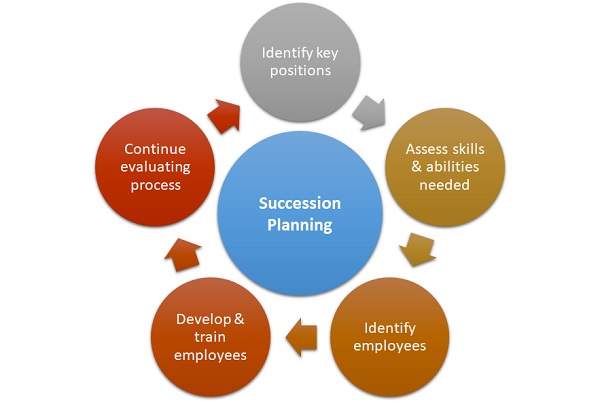The Benefits of Succession Planning
Succession planning is a critical process that ensures the smooth transition of key roles within an organization. It involves identifying and developing internal talent to fill important positions when they become vacant. In this article, we will explore the numerous benefits of succession planning and how it can contribute to the long-term success of a company.
Enhanced Continuity
One of the primary advantages of succession planning is the enhanced continuity it provides. By identifying and grooming potential successors in advance, organizations can minimize disruptions when key employees retire, resign, or are promoted. This proactive approach ensures that there is always a capable individual ready to step into critical positions, maintaining the momentum of the business.
Reduced Recruitment Costs
Succession planning can significantly reduce recruitment costs for organizations. Instead of relying on external hiring and subsequent onboarding processes, companies can focus on developing their internal talent pool. By investing in training and development programs, organizations can nurture the skills and expertise of their employees, thereby minimizing the need to search for external candidates and incur recruitment expenses.
Retaining Institutional Knowledge
When employees with valuable knowledge and experience leave an organization, it can result in a loss of institutional knowledge. Succession planning helps mitigate this risk by ensuring that knowledge transfer takes place between outgoing and incoming employees. By identifying successors in advance, organizations can facilitate a smooth transfer of knowledge, preserving critical information and expertise within the company.
Increased Employee Engagement
Succession planning can have a positive impact on employee engagement. When employees see opportunities for growth and advancement within the organization, they are more likely to be motivated and committed to their roles. By implementing a transparent succession planning process, organizations can foster a culture of development and provide employees with a clear path for career progression, leading to higher levels of engagement and job satisfaction.
Improved Organizational Performance
Effective succession planning can contribute to improved organizational performance. By identifying and developing potential successors, organizations ensure that key positions are filled by individuals who are well-prepared and equipped to handle the responsibilities. This leads to smoother transitions, increased productivity, and better decision-making, ultimately driving the overall performance and success of the company.

Succession planning is not just a strategic HR process; it is a vital component of long-term organizational success. By investing in succession planning, companies can enhance continuity, reduce recruitment costs, retain institutional knowledge, increase employee engagement, and improve overall performance. Embracing succession planning as a proactive approach can position organizations for sustained growth and success in an ever-evolving business landscape.
Frequently Asked Questions – Benefits of Succession Planning
1. What is succession planning?
Succession planning is the process of identifying and developing potential future leaders within an organization to fill key positions when they become vacant.
2. Why is succession planning important?
Succession planning is important because it ensures continuity in leadership, minimizes disruptions, and helps organizations maintain a competitive edge by having a pool of qualified individuals ready to step into critical roles.
3. What are the benefits of succession planning?
The benefits of succession planning include:
Reduced recruitment costs
Smooth leadership transitions
Increased employee engagement and retention
Preservation of institutional knowledge
Enhanced organizational performance
4. How does succession planning reduce recruitment costs?
Succession planning reduces recruitment costs by identifying and developing internal talent, which eliminates the need for expensive external searches and hiring processes.
5. How does succession planning ensure smooth leadership transitions?
Succession planning ensures smooth leadership transitions by providing a clear roadmap for the development and preparation of potential successors, allowing them to gain the necessary skills and experience to seamlessly take over when a vacancy occurs.
6. How does succession planning increase employee engagement and retention?
Succession planning increases employee engagement and retention by demonstrating to employees that there are growth and advancement opportunities within the organization. This motivates them to stay and contribute to their development.
7. How does succession planning preserve institutional knowledge?
Succession planning preserves institutional knowledge by capturing and transferring valuable expertise from experienced employees to their successors. This ensures that critical knowledge and skills are retained within the organization.
8. How does succession planning enhance organizational performance?
Succession planning enhances organizational performance by ensuring a continuous supply of competent leaders who are well-prepared to handle challenges and drive the organization toward its goals.
9. Who should be involved in succession planning?
Succession planning should involve key stakeholders, including senior leaders, HR professionals, and managers who have a deep understanding of the organization’s strategic objectives and talent needs.
10. How often should succession planning be reviewed and updated?
Succession planning should be reviewed and updated regularly, ideally on an annual basis, to account for changes in business goals, workforce demographics, and individual development needs.




